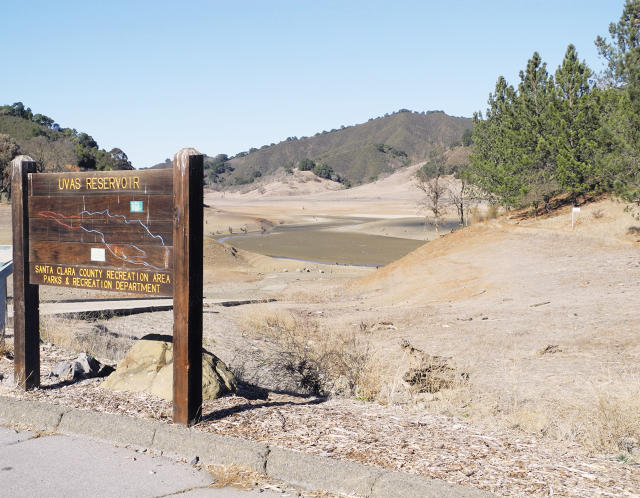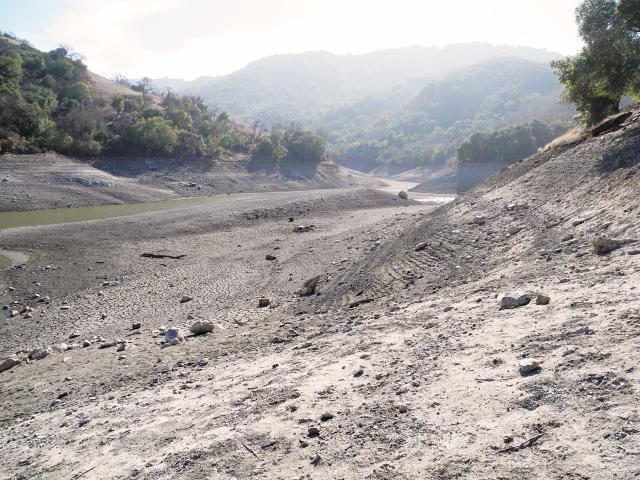California Is Sitting On The Solution To Its Drought Problem According to the article below, we have enough water for everything, we're just wasting a lot of it. If this is right, then the more people who know about it, the more chance there is that some intelligent steps might be taken to conserve our water.
There's a lot of water around, it just needs to be put to better use.
WRITTEN BY Terry Tamminen
By now you’ve heard about the epic drought threatening every California water user, from almond growers to swimming pool owners, resulting in mandatory cutbacks and ostracism from neighbors for being the last on the block with a green lawn. So would it surprise you to learn that the state actually has more than enough water to go around?
About a decade ago, the blue-collar community of Sun Valley in Los Angeles County was faced with flooding that impacted homes and businesses during winter rains. The county had planned a $47 million storm sewer system to drain the floodwaters from streets and dump it in the Pacific Ocean via the Los Angeles River (itself now a mostly concrete flood management canal). Instead, clever community planners decided to invest those funds in underground cisterns that would capture the water for later use.
A dilapidated city park was remodeled with cisterns below, as were medians along broad boulevards that were themselves underwater during heavy rains. The result was a system, using ancient Roman technology, that captures 8,000 acre feet of water each year. That's about twice what the entire city consumes, solving the flooding problem and creating a source of fresh water for thousands of residents. By the way, the investment also gave the city a new park with ball fields and picnic grounds and higher adjacent property values.
But could something this simple be the solution for a thirsty state that is getting hotter, growing faster, and producing more food crops than ever before? According to the National Weather Service, the average annual rainfall in Los Angeles for the past 100 years is about 14 inches, more than enough to serve the needs of the region and then some.
Flickr user Ian Abbott
During the decade from 2003 to 2012 we had wet years of nearly 38 inches of rain and dry ones of less than 4 inches, but the average was still just under 14 inches, meaning there is no drought in the most populous region of the state.
So what’s the problem? For the past 150 years, the goal was to address the same challenge that Sun Valley faced: not a lack of water, but too much water during the brief, intense rainy season. So Southern California built storm sewers and concreted the rivers to efficiently carry all that fresh water into the ocean.
The answer to the drought, therefore, is to stop wasting this valuable resource. If we captured and used the water that already falls here, we could turn off the tap from the north and leave that water for farmers. Just as we discovered in California that sunlight falling on every rooftop can be harnessed to generate energy, right at the place it is used, we can capture the water that falls on those same landscapes for use where it’s needed. In fact, the Los Angeles non-profit TreePeople has been demonstrating for years that every type of building or land use can do what Sun Valley has done, or what solar panels do for energy generation—decentralize.
One of their projects used simple rain barrels to collect water at a typical home and a graded lawn to capture and retain water, allowing it to seep into the ground instead of running off into the street. In another demonstration, asphalt at a school campus was replaced by vegetation and trees, cooling the buildings and lowering energy costs, while capturing water under the parking lot in cisterns. In both cases, the result was more water stored than could be used onsite, meaning the landowner had a valuable commodity to sell to the local water utility and a lower cost for their own water needs (after amortizing the value of the installations).
Moreover, the two major sewage treatment plants that serve Los Angeles County treat over 700 million gallons of sewage water per day and dump most of it in the ocean. As the state looks for ways to water golf courses, ball fields, or flush toilets, it would be far cheaper to re-use the water we already pay for, by investing in reverse plumbing instead of expensive new dams and pipes to pump more costly water from the north or the Colorado River.
Sure, we could desalinate ocean water, but the state’s landmark laws to tackle greenhouse gases and save energy mandate that less energy be generated in the state over time, not more. Desalination demands unthinkable amounts of energy so in essence we will solve one problem by exacerbating another.
Yes, to solve the "drought" in a few short years, there are two basic tasks that California needs to undertake. First, we should set a goal of zero net water use in southern California by the year 2030 and replace the water we currently ship across the state with captured water that falls in abundance in the region on an average annual basis. Second, we need to tackle the antiquated system of water rights that pits farmers against each other for access to various water supplies and that forces some landowners to use the water for low value, water-intensive crops because of "use it or lose it" water laws. Farmers need not compete with urban users or environmentalists and fishers (who want more water left in natural river ecosystems) if they stop fighting amongst themselves first and compromise on reasonable water rights reforms.
As we all remember from our high school readings of Rime of the Ancient Mariner, the quote goes: "water, water, everywhere, nor any drop to drink." If we take this common-sense, cost-efficient approach we could solve the drought, keep feeding America, watering our lawns, diving into our swimming pools, spraying fake snow on movie sets, and showing the world how to invest and innovate to solve major challenges—all the things the world loves about California.
-
 Bulletin Board
Quick Nav
Bulletin Board
Quick Nav

- Bulletin Board
- Discussion Board
- WaccoReader
- What?? CA has more than enough Water?
Click Banner For More Info
See All Sponsors
Advertise Here
So Long and Thanks for All the Fish!
This site is now closed permanently to new posts.We recommend you use the new Townsy Cafe!
Click anywhere but the link to dismiss overlay!
Results 1 to 1 of 1
- Share this thread on:
- Follow: No Email
-
Thread Tools
-
Search Thread
-
 comodin
comodin
-
Real Name: (not displayed to guest users)
-
Join Date: Dec 18, 2007
- Expressed Gratitude: 350
- Received Gratitude 122 times for 44 posts
-
Last Online 04-13-2024
- View Profile
-
 Ignore
Ignore
-
 View Posts: (76)
View Posts: (76)
What?? CA has more than enough Water?
Last edited by Barry; 06-29-2015 at 01:24 PM.
-
Quick Navigation
WaccoReader
Top
- Site Areas
- Settings
- Private Messages
- Subscriptions
- Who's Online
- Search Categories
- Categories Home
- Categories
- Sonoma County Bulletin Board
- General Community
- Coronavirus
- Coronavirus Conspiracy Theories
- Events, Classes and Meetings
- Business Directory
- Sales & Timely Offers
- Services/Referrals Wanted
- Health & Wellness
- For Sale/Free/Wanted
- Employment Offered & Wanted
- Housing/Offices
- WaccoElders
- Housesitting/Petsitting
- Pets and other Critters
- Marin County Bulletin Board
- Discussion Board
- About WaccoBB
« (Previous Thread)
Woman Removes Confederate Flag from S. Carolina Statehouse
Full Rainbow over Grateful Dead show! (Next Thread) »
Full Rainbow over Grateful Dead show! (Next Thread) »
Similar Threads
-
Article: Water or Wine? California’s Drought & Water Competition
By Shepherd in forum General CommunityReplies: 16Last Post: 04-15-2015, 07:12 PM -
The New “Water Barons”: Wall Street Mega-Banks are Buying up the World’s Water
By arthunter in forum National & International PoliticsReplies: 0Last Post: 08-20-2014, 06:03 PM
Tags (user supplied keywords) for this Thread
Bookmarks
-
 Facebook
Facebook
-
 Twitter
Twitter
-
 StumbleUpon
StumbleUpon





